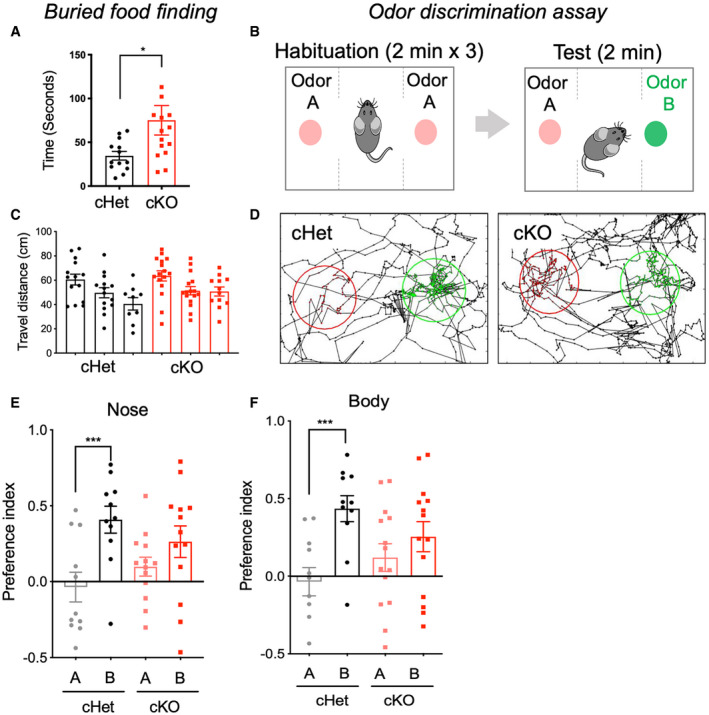-
A
Astrocyte‐specific Daam2 cKO mice show delays in buried food finding. N = 13, 15 mice per genotype. Data are presented as mean ± SEM. Student’s t‐test was used, *P < 0.05.
-
B
Illustration of odor discrimination assay. For habituation, each mouse was habituated in a chamber with identical stimulation (odor A) on both sides for 2 min, repeated three times. To test for odor discrimination, a newly introduced odor (odor B) was randomly assigned to one of the sides.
-
C
Total travel distance was measured by tracing the nose and body of each mouse in each habituation session of the odor discrimination assay. Both genotypes show no difference in total travel distance. Total N = 11, 13 mice were used for each genotype. Data are presented as mean ± SEM. Student’s t‐test was used.
-
D
Representative traces of nose position tracking of cHet and cKO mice during the discrimination test period. Habituated (odor A) and the new odor (odor B) were placed in the center of the indicated area (odor A: red circle, odor B: green circle). Nose positions within the circled area were indicated with the corresponding color for each odor.
-
E, F
Preference index was tracked and calculated using MATLAB and OptiMouse. One‐sample t‐test and Wilcoxon test were used for statistical analysis. Data are presented as mean ± SEM. ***P < 0.001. Total N = 11, 13 mice were used for each genotype.

